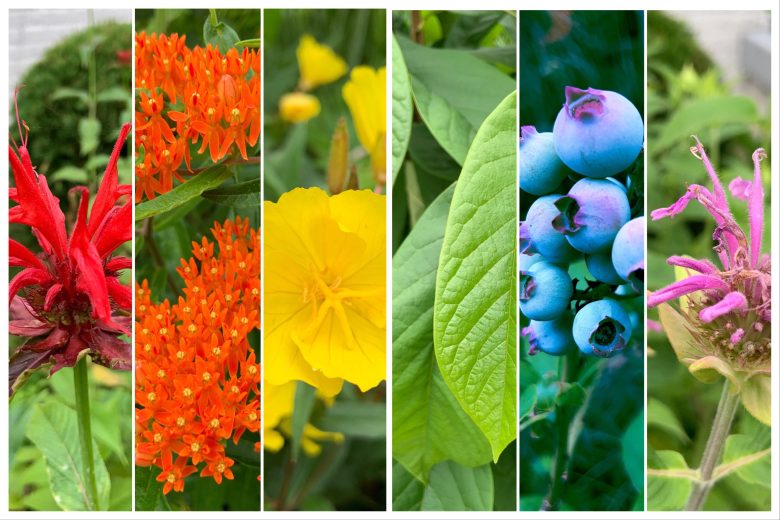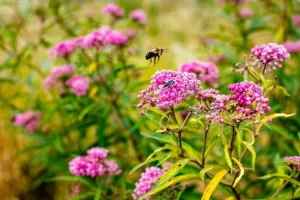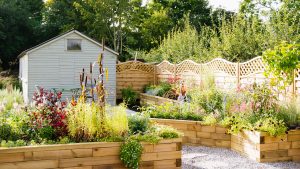In today’s fast-paced world, our connection with nature is diminishing. Urbanization, pollution, and deforestation are taking their toll on our environment, affecting not only people but also the countless species that call our planet home. However, we have a simple and effective way to help reverse this trend: improving wildlife habitat with native plants.
The Importance of Native Plants
Native plants are plants that occur naturally in a specific area and have evolved over thousands of years with the local wildlife. They have adapted to the local climate, soil, and nature, making them an important part of the ecosystem. Here’s why they’re crucial:
- Biodiversity: Native plants support a variety of native wildlife, from insects and birds to mammals and amphibians. These plants provide food, shelter, and breeding grounds for countless species, helping to maintain diverse and healthy ecosystems.
- Pollinators: Bees, butterflies, and other pollinators depend on native plants for their nectar and pollen. By growing native flowers we can ensure the survival of these important pollinators, which in turn supports agriculture by helping produce fruit and vegetables.
- Conserve water: Native plants are well suited to the local climate and soil conditions and require less water and maintenance than non-native plants. By using less water in our gardens, we can contribute to water conservation efforts and reduce our carbon footprint.
How to Use Native Plants to Increase Wildlife Populations?
Creating a wildlife-friendly garden with native plants is a rewarding and relatively simple endeavor. Here are some steps to get started:
- Research native species: First, research the native plants that thrive in your area. Local nurseries, botanical gardens, and online resources can provide lists of native species suitable for your region. Choose a variety of plants to provide food and shelter year-round.
- Plan your garden: Design your garden with animals in mind. Add a mix of trees, shrubs, flowers, and grasses to meet the needs of different species. If space allows, create diverse habitats, such as grasslands, wetlands, and forests.
- Avoid chemicals: Minimize or eliminate the use of pesticides and herbicides in your garden. These chemicals are harmful not only to unwanted pests but also to beneficial insects and other wildlife.
- Provide water: Set up a birdbath or small pond to provide water for wildlife. Even a shallow bowl of water is effective at attracting birds, butterflies, and other creatures.
- Maintenance: Native gardens generally require less maintenance than traditional gardens, but still benefit from occasional maintenance. Prune and weed if necessary and let nature take its course.
Information Dissemination
Using native plants to increase wildlife diversity is a great way to connect with nature and have a positive impact on the environment. Share your experiences with friends and neighbors and encourage them to join the movement. By integrating native plants into our landscapes, we can create a network of wildlife-friendly habitats in our communities.
Benefits of Nature-friendly Gardens
Creating a garden that enriches nature with native plants not only benefits the creatures that live there; It also offers several benefits to you and your community:
- Aesthetic appeal: Nature-friendly gardens can be very beautiful. Native plants often have unique textures, colors, and shapes that can add charm and character to your outdoor space. In addition, the various birds and butterflies that come to your garden provide a visual treat.
- Educational Opportunities: Nature-friendly gardens offer excellent educational opportunities. Both children and adults can learn about local flora and fauna, the importance of biodiversity, and the delicate balance of ecosystems. Consider labeling plants and creating a small nature trail to attract visitors.
- Property Value: Well-maintained gardens, especially those designed with ecological considerations in mind, can increase the value of your property. Many home buyers appreciate the appeal of a lush, vibrant yard that attracts wildlife.
- Reduce stress: Spending time in a garden full of life can have a calming and therapeutic effect. The sights and sounds of nature can reduce stress and promote mental health. Your garden can be a sanctuary where you can relax and connect with nature.
- Contribution to nature conservation: By creating a nature-friendly garden, you actively participate in nature conservation efforts. Every additional wildlife habitat helps protect endangered species and helps address the ongoing loss of habitat.
Community Involvement
Using native plants to increase wildlife diversity is not limited to a single garden. The community can also get involved in this effort to have a greater impact:
- Community Garden: Consider starting or participating in a community garden dedicated to native plants. It serves as an educational center and meeting place for like-minded people passionate about conservation.
- Local policies: Advocate for local policies that encourage the use of native plants in public spaces, parks, and medians. Municipalities can play a crucial role in promoting sustainable green spaces.
- Workshops and Events: Host workshops, workshops, and events to educate your community about the benefits of nature-friendly gardening. Invite experts to talk about native plants, conservation, and sustainable landscaping practices.
- Work with schools: Involve local schools in natural gardening projects. These initiatives help instill a sense of environmental responsibility in the younger generation.
Conclusion
Using native plants to protect wildlife is a meaningful and feasible way to make a positive impact on the environment. By creating and supporting nature-friendly gardens we can help conserve biodiversity, enjoy the beauty of nature and promote a sense of community involvement.
As more individuals and communities embrace this eco-friendly approach to landscaping, we are one step closer to a world where people and wildlife live in harmony and benefit from the beauty and vitality of nature’s interconnected web of life. So roll up your sleeves, plant these native species, and watch your garden come alive with the wonders of the natural world.
FAQs
1. What are native plants?
Native plants are plants that grow naturally in a specific area and have adapted over time to the local climate, soil, and nature. They play a crucial role in local ecosystems and support native wildlife.
2. Why should I use native plants in my garden?
Using native plants in your garden helps support biodiversity, provides food and shelter for native animals, saves water, and requires less maintenance than non-native species.
3. How do I find native plants for my region?
You can find plants native to your region by visiting a local nursery or botanical garden or by using online resources such as native plant databases and field guides specific to your location.
4. What types of wildlife might attract native plants?
Native plants can attract a variety of wildlife, including birds, butterflies, bees, insects, amphibians, and even mammals. The specific species depends on your location and the plants you choose.
5. Do native gardens require a lot of maintenance?
Once established, native gardens generally require less maintenance than traditional gardens. They are adapted to local conditions and require minimal fertilizers and pesticides.



